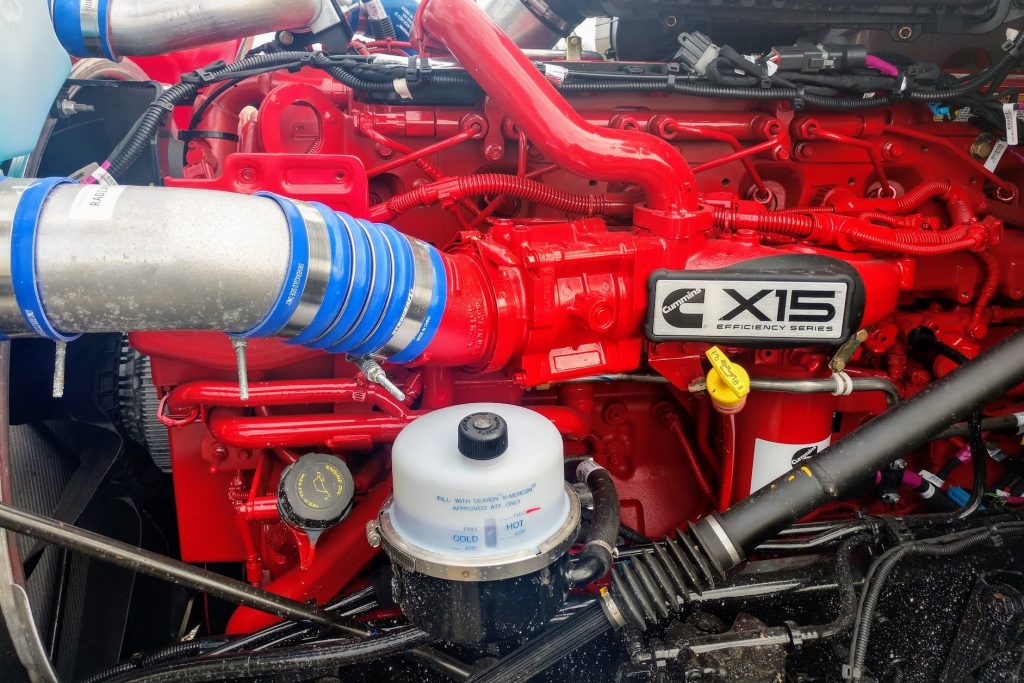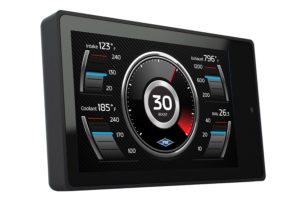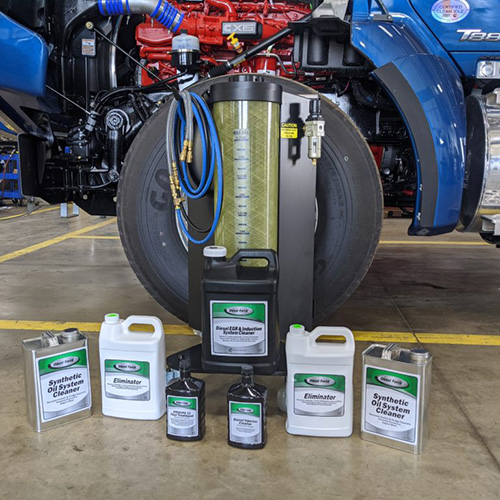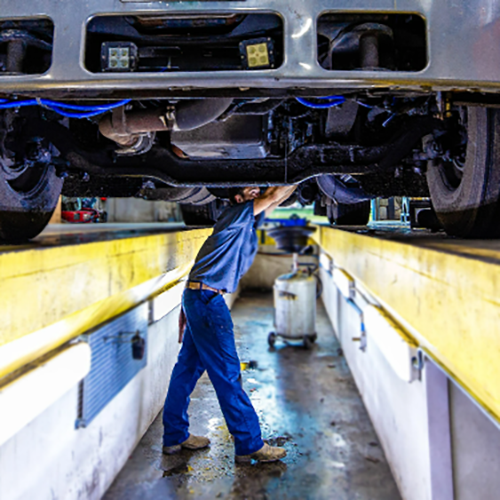Diesel Emissions Delete - Should I Do Emission Deleting?
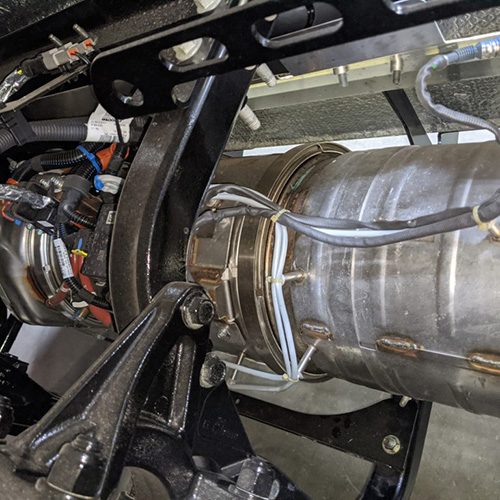
Are you considering deleting the emissions on your semi or heavy-duty diesel truck for performance improvements and better fuel economy? If so, you may want to reconsider.
Diesel Emission Deleting (DED) is a process that involves removing devices and components from an engine on newer trucks designed to reduce its polluting output – such as particulate matter, hydrocarbons, and nitrogen oxides.
DED can increase vehicle performance, but it also carries significant risks; not only do illegal deletes risk major government fines if caught, but they can also lead to premature engine failure down the road.
This blog post will discuss these risks in depth while exploring why emission deleting should be avoided unless absolutely necessary.
Table of Contents
Understanding Diesel Emissions Deletes
Diesel emissions deletes refer to modifications made to the emission-related parts of diesel engines, including:
- diesel particulate filters (DPFs)
- exhaust gas recirculation (EGR) systems
- selective catalytic reduction (SCR) systems
- engine control unit (ECU)
These deletes are mainly performed to try to increase the truck’s performance and fuel efficiency by reducing exhaust flow restrictions.
These modifications can include physically removing the components or using tuning software to manipulate the engine’s electronic control unit (ECU).
However, this practice is illegal and violates emissions regulations, leading to increased pollution and reducing the lifespan of the engine.
Legal Issues and Regulatory Consequences
The legal risks of using diesel emissions deletes are significant:
- Violation of federal law and local regulations: Diesel emissions delete kits are considered illegal in the United States under the Clean Air Act. By removing or tampering with emissions control systems, truck owners are in direct violation of these regulations.
- Potential fines, penalties, and legal consequences for non-compliance: Individuals found using deleted emissions systems can face severe penalties. These can include hefty fines, vehicle impoundment, suspension of licenses, or even imprisonment. In addition, companies that operate commercial vehicles may face regulatory penalties, loss of business permits, or legal action.
Regulatory agencies have been taking steps to combat diesel emissions deletes:
- Stricter enforcement and monitoring of emission standards: Regulatory bodies such as the Environmental Protection Agency (EPA) in the United States have been increasing their efforts to enforce emissions standards. They conduct inspections of emission equipment, audits, and emissions tests to ensure compliance and detect any violations.
- Increased scrutiny of vehicles for compliance: Authorities are implementing more rigorous inspections and testing procedures to identify vehicles that have undergone emissions deletes. This includes the use of advanced technologies, such as roadside emission testing equipment and remote sensing of diesel exhaust, to identify non-compliant vehicles.
These efforts aim to discourage the use of diesel emissions deletes and protect public health by ensuring vehicles adhere to emissions regulations.
Engine Performance and Longevity
Deleting diesel emissions can significantly negatively impact the engine’s performance, driving up maintenance costs.
By removing or disabling emissions control systems on a diesel vehicle, the engine is subjected to increased levels of pollutants, such as particulate matter and nitrogen oxides.
This can lead to a buildup of soot and carbon deposits within the engine, affecting its efficiency and overall performance.
Reduced fuel efficiency
Deleting diesel emissions can reduce fuel efficiency and drive up fuel costs in several ways.
Firstly, by removing or disabling components such as the diesel particulate filter (DPF) or exhaust gas recirculation (EGR) system, the engine may experience a decrease in exhaust back pressure. This can lead to incomplete combustion and reduced fuel efficiency.
Secondly, emissions control systems play a crucial role in optimizing the air-fuel mixture and ensuring efficient combustion. When these systems are removed or tampered with, the engine may not operate at its optimal efficiency, resulting in a higher fuel consumption rate.
Additionally, without emissions control systems, the engine may need to work harder to compensate for the lack of efficiency. This increased workload can lead to higher fuel consumption and decreased overall fuel efficiency.
It is worth noting that while deleting diesel emissions may offer short-term gains in performance, it often comes at the cost of long-term fuel efficiency and can also result in increased emissions of harmful pollutants into the environment.
Decreased engine power and torque
A diesel emissions deletion can decrease engine power and torque in a few ways:
- Altered air-fuel ratio: Emissions control systems, such as the EGR valve and EGR Cooler, help regulate the air-fuel mixture in the engine for optimal combustion. When these systems are removed or tampered with, the air-fuel ratio may be disrupted, leading to incomplete combustion. This can result in a decrease in engine power and torque.
- Reduced turbocharger efficiency: The turbocharger plays a crucial role in boosting the airflow into the engine to increase power and torque output. However, without emissions control systems like the diesel particulate filter (DPF), the turbocharger can be exposed to higher levels of soot and contaminants. This can lead to decreased efficiency and performance of the turbocharger, resulting in reduced engine power and torque.
- Engine calibration mismatch: Modern diesel engines are calibrated to work in conjunction with emissions control systems to ensure optimal performance. Removing or tampering with these systems can create a mismatch between the engine calibration and the altered conditions. This mismatch can negatively impact engine power and torque output.
It’s important to note that while deleting diesel emissions may provide short-term gains in power and torque, it often comes at the cost of long-term engine performance, fuel efficiency, and emissions compliance.
Premature engine wear and damage
Performing a diesel emissions deletion can cause premature engine wear and damage, reducing the life of the engine in several ways:
- Increased heat and temperature: Emissions control systems, such as the diesel particulate filter (DPF), help regulate exhaust gas temperatures by trapping and burning off diesel particulate matter. Removing or disabling these systems can lead to higher exhaust gas temperatures, which can exceed the safe operating range of engine components. This excess heat can cause accelerated wear and damage to critical engine parts like pistons, valves, and cylinder heads.
- Higher levels of contaminants: Emissions control systems, including the exhaust gas recirculation (EGR) system, help reduce the amount of harmful pollutants released into the environment. By removing or tampering with these systems, higher levels of contaminants like soot, carbon, and unburned fuel can enter the engine. These contaminants can cause abrasive wear on internal engine components, leading to premature damage.
- Inadequate lubrication: Emissions control systems play a role in optimizing the combustion process and reducing the formation of harmful byproducts. When these systems are removed, the combustion process may become less efficient, resulting in increased levels of unburned fuel and oil within the engine. This can dilute the engine oil, reducing its lubricating properties and leading to increased friction, wear, and potential damage to engine components.
- Altered engine calibration: Modern diesel engines are calibrated to work in conjunction with emissions control systems to ensure optimal performance and longevity. Removing or tampering with these systems can disrupt the engine’s calibration, leading to suboptimal operating conditions. This can cause increased stress on engine components and result in premature wear and damage.
It is important to note that performing diesel emissions deletion increases the risk of engine problems and compromises compliance with emissions regulations and environmental sustainability.
Diagnostic Concerns
Diesel delete software, when used to tamper with emissions control systems, has the potential to trick diagnostic tools and make it harder to detect problems. This software is often designed to bypass or manipulate the signals that standard diagnostic tools rely on to identify engine issues.
By altering sensor readings or suppressing fault codes, diesel delete software can deceive diagnostic tools into thinking that everything is functioning properly. This can make it challenging for technicians to diagnose and troubleshoot problems accurately.
Furthermore, this software is typically not compatible with standard diagnostic tools, as it is specifically engineered to work in conjunction with the deleted emissions components. As a result, when a vehicle with diesel delete software is connected to a standard diagnostic tool, it may not provide accurate readings or detect any issues related to the deleted components.
This poses significant risks as it can lead to undetected engine malfunctions or failures. Without proper monitoring and detection of problems, there is an increased likelihood of accidents and breakdowns, putting both the driver and other road users at risk.
It’s important to note that using diesel delete software is illegal in many jurisdictions, as it violates emissions regulations and environmental standards. Additionally, tampering with emissions control systems can void warranties and have serious legal consequences.
Responsible Alternatives and Solutions
Performing a diesel delete is not a responsible or sustainable approach to address issues related to emissions control systems.
Instead, the following alternatives and solutions provide a better approach:
Importance of Proper Emissions Cleaning
Responsible maintenance and proper upkeep of emissions control systems offer several advantages over diesel delete:
- Environmental Protection: By maintaining emissions control systems, we contribute to reducing harmful pollutants in the environment, improving air quality, and mitigating the impact of climate change.
- Compliance with Regulations: Proper upkeep ensures adherence to emissions regulations set by authorities, avoiding legal consequences and potential fines associated with non-compliance.
- Optimal Engine Performance: Regular maintenance and proper functioning of emissions control systems optimize engine performance, leading to improved fuel efficiency, increased power output, and smoother operation.
- Longevity and Reliability: Responsible maintenance minimizes wear and tear on engine components and emissions-related parts, extending their lifespan and enhancing overall reliability. This reduces the risk of breakdowns, accidents, and costly repairs.
PDI Performance Solutions For Better Performance With Heavy Loads
PDI performance solutions offer a responsible alternative to diesel deletion by addressing performance and emissions simultaneously:
- Enhanced Performance: PDI’s performance solutions are designed to optimize engine performance, providing increased power, torque, and throttle response without compromising emissions compliance.
- Emissions Compliance: PDI ensures that their solutions meet or exceed emissions standards, allowing you to enjoy improved performance within legal boundaries.
- Engine Protection: PDI’s products are engineered to protect critical engine components, reducing the risk of premature wear and potential damage. This enhances engine longevity and reliability.
- Expertise and Support: PDI offers expert guidance and support, helping customers choose the right products and providing assistance for installation and maintenance.
Regular Maintenance, Inspections, and Adherence to Emissions Standards
Regular maintenance, inspections, and adherence to emissions standards are responsible practices that yield multiple benefits:
- Early Problem Detection: Regular maintenance and inspections allow for the early detection of issues related to emissions control systems. This enables timely repairs and prevents larger problems from arising.
- Improved Efficiency: Proper maintenance ensures the optimal functioning of emissions control systems, leading to improved fuel mileage and reduced emissions.
- Compliance and Legal Obligations: Adhering to emissions standards helps to meet legal obligations, promotes environmental responsibility, and avoids potential fines or penalties.
- Safety and Reliability: By maintaining emissions control systems, the risk of engine malfunctions, breakdowns, and accidents is minimized, ensuring safer and more reliable vehicle operation.
By emphasizing regular maintenance and inspections at a knowledgeable repair facility and utilizing PDI performance solutions on heavy-duty vehicles, we can achieve both optimized engine performance and environmental sustainability.
Conclusion
In conclusion, diesel deletes pose significant risks to semi-trucks and the environment.
By tampering with emissions control systems, they contribute to increased pollution, violate emissions regulations, and, in the worst-case scenario, jeopardize engine longevity, requiring expensive repairs.
Prioritizing environmental responsibility, legal compliance, and the long-term reliability of our trucks is crucial.
As readers, we have the power to make informed choices and support sustainable practices in the trucking industry.
Let’s choose responsible maintenance, explore viable alternatives like PDI performance solutions, and advocate for regular inspections and adherence to emissions standards.
Together, we can create a cleaner, greener, and more sustainable future for our trucks and the planet.

